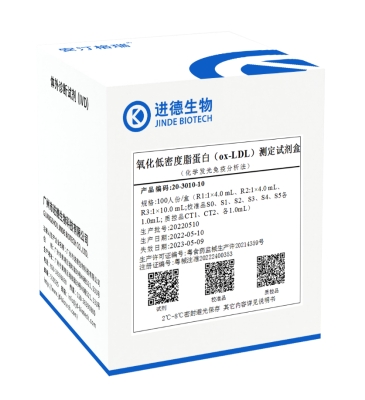ox-LDL(氧化低密度脂蛋白)
Oxidized Low Density Lipoprotein Chemiluminescent Immunoassay

☑️ Description
ox-LDL measures protein damage due to oxidative modification of the apolipoprotein B (ApoB) subunit on low-density lipoprotein cholesterol (LDL-C).1 Briefly, LDL-C enters the artery wall where it becomes oxidized. ox-LDL is then recognized by scavenger receptors on the macrophages which engulf ox-LDL, resulting in foam cell formation,2 vascular inflammation,1 and initiation of atherosclerosis.
☑️ Clinical Significance
Individuals with high levels of ox-LDL are 3.5X more likely to develop metabolic syndrome in the next 5 years.
Increased ox-LDL levels are associated with the presence of coronary artery disease (CAD).
ox-LDLinhibits production of endothelial nitric oxide which can also lead to cell death, increased endothelial dysfunction, plaque formation, and platelet aggregation.
• In healthy middle-aged men, high ox-LDL levels are associated with a 4X greater risk of developing coronary heart disease.
• Levels of ox-LDL increase in a step-wise fashion as the severity of CAD increases.
• ox-LDL levels may also be elevated in patients with kidney disease, polycystic ovary syndrome,12 and known autoimmune disorders.
☑️ Testing Frequency
ox-LDL testing is determined by an individual’s medical history, but it may be performed semi-annually or annually as necessary. If the initial test result is abnormal, then follow-up testing may be performed within 3-6 months following treatment.
☑️ Increased ox-LDL levels signify increased risk for:
Metabolic syndrome
Cardiovascular disease
Acute myocardial infarction
☑️ ox-LDL levels may be decreased by:
Maintaining a healthy weight/diet
Exercising more
Cholesterol-lowering medications
Contact Us
Follow us
 Wechat
Wechat

